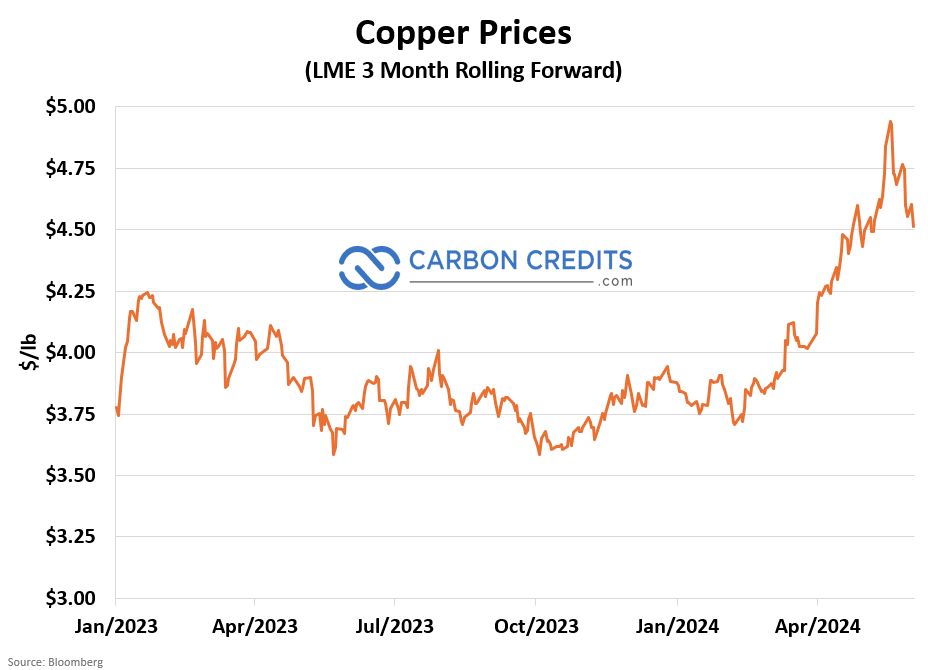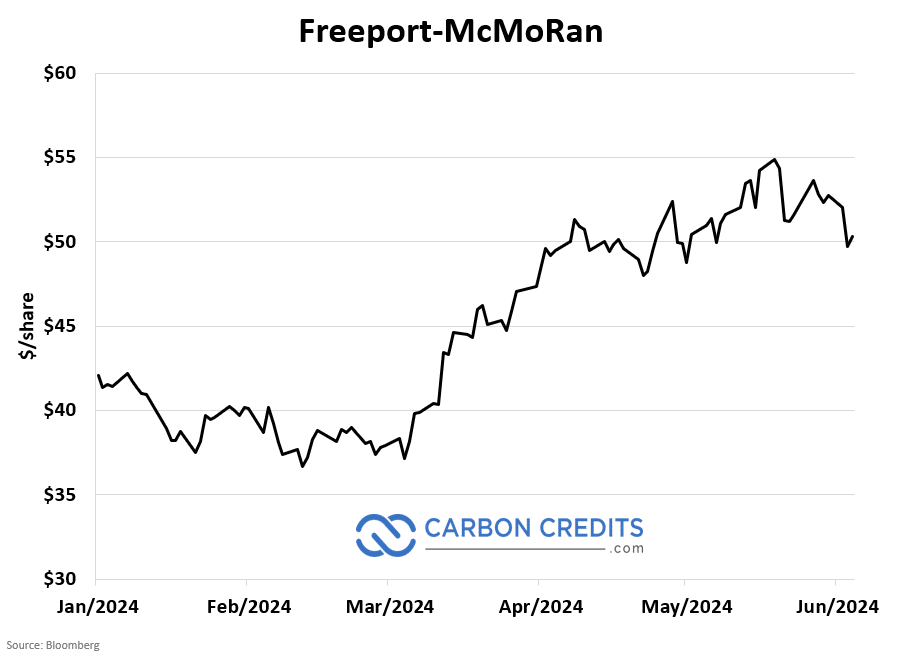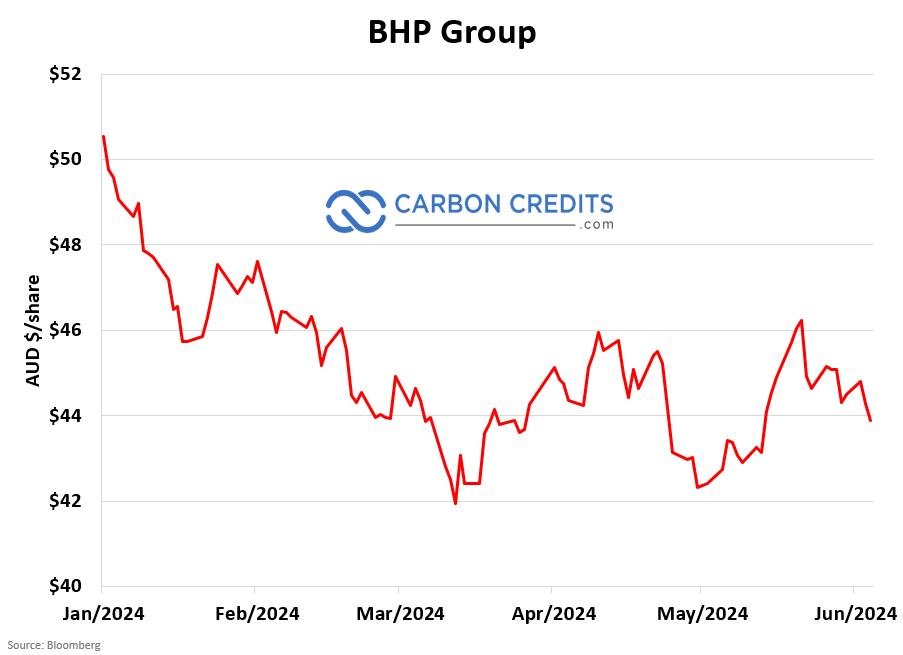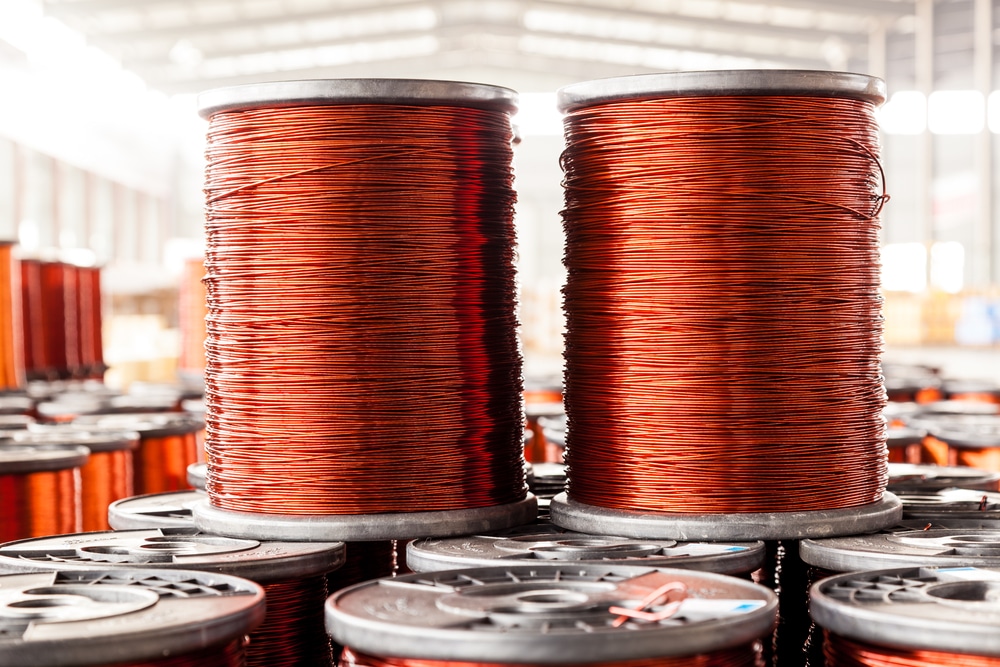The copper market has experienced a notable uptrend in 2024, witnessing a surge of over 20% from mid-February until late May. But a few days after, copper prices dipped below $10,000 per metric ton amid growing global inventories and sluggish U.S. job openings data.
This fuels expectations of potential interest rate cuts by the Federal Reserve this year, while adversely impacting major copper stocks.
Inventories on the Shanghai Futures Exchange surged to levels not seen since 2020, at 321,695 tons, alongside steady inflows into Asian depots monitored by the London Metal Exchange in recent weeks, hitting 118,950 tons, the highest since April 24.
This inventory buildup, typically during declining inventories, has exerted downward pressure on prices following copper’s recent record high above $11,100 (almost $5/pound).

This is driven partly by speculation from funds anticipating increased use of the metal in green energy sectors and concerns over potential supply shortages. However, the steep and erratic price movements deterred some physical copper consumers.
Copper Crunch: A Market in Turmoil
This year, base metals experienced a surge in expectations of reduced U.S. interest rates and indications of China’s economic recovery from the pandemic’s aftermath. However, the persistent increase in exchange inventories suggests that current buyer demand is adequately met, challenging bullish forecasts of a price uptrend.
Carsten Menke, head of next-generation research at Julius Baer, remarked that the copper market appears adequately supplied, dampening hopes for a rapid price rebound. He anticipates consolidation in the market during the summer.
Copper mining stocks, such as Freeport-McMoRan Inc. and BHP, also experienced declines, with the former down by as much as 4.8% while the latter saw a 2.0% drop.
Freeport-McMoRan Stocks Tumbling Down
Freeport-McMoRan (NYSE: FCX) holds a prominent position in the global natural resources sector, primarily focusing on copper mining alongside gold and molybdenum exploration and production.
With copper as its primary revenue driver, Freeport has witnessed significant stock performance over the past year. It outpaced the S&P 500 Index with a 52-week return of 50.5%, compared to the index’s 24.4% gain. Year-to-date, the copper miner has surged around 23%, aligning closely with analysts’ mean target price of $52.20.
In the first quarter of 2024, Freeport-McMoRan reported robust financial results, exceeding Wall Street expectations. The company recorded a revenue of $6.32 billion, marking a 17% increase from the same period in 2023.
Despite a 29% decline in net income to $473 million due to higher expenses, the earnings per share (EPS) surpassed analysts’ estimates at $0.32. Freeport’s copper production for the quarter reached 1.1 billion pounds, up from 965 million pounds a year earlier, primarily driven by a significant output increase from its Indonesian operations. But with the recent plunge in copper prices, Freeport stocks also fall by up to 4.8%.

While Freeport’s valuation metrics suggest a premium valuation compared to historical averages and some industry peers, the strong demand outlook for copper amidst the green energy transition could potentially justify this premium.
BHP Copper Shares Dropping
The BHP Group Ltd (ASX: BHP) share price also witnesses a decline, reflecting a broader downturn in the mining sector.
Shares in the S&P/ASX 200 Index mining giant closed 1.2% lower at AUD$44.28. As of Wednesday morning, shares are trading at AUD$43.71 each, marking a further decrease of 1.3%. Meanwhile, the ASX 200 has seen a modest increase of 0.2% during the same period.
The decline in BHP’s share price on the ASX mirrors a similar trend in the miner’s international listings. In the United States, where BHP is listed on the New York Stock Exchange (NYSE), shares closed down 2.2% overnight.

The primary reason behind the downward pressure appears to be a notable retreat in metal prices.
Copper, which serves as BHP’s second-largest revenue generator after iron ore, experienced a 2.0% decline overnight, settling at US$9,945 per tonne on June 4. Despite still hovering near historic highs, the copper price has retraced about 9% since May 20.
Similarly, the iron ore price recorded a 2.1% drop overnight, reaching US$107.65 per tonne. Notably, on May 7, this vital steel-making metal was priced just below US$120 per tonne, having declined from its peak of US$143 per tonne in early January.
BHP’s merge proposal with Anglo American, which was put off, aims to cement its position as the world’s leading copper producer. If otherwise, the merged entity would have hold substantial copper assets, including key mines in South America, further solidifying BHP’s dominance in the copper market.
What’s The Future of Copper?
Despite this falling trend in copper prices and stocks, analysts remain optimistic. Hedge fund manager Pierre Andurand has made a bold prediction, suggesting that copper prices might increase to $40,000 per tonne in four years or more. This projection stems from the increasing electrification of various global industries, notably electric vehicles (EVs), solar panels, wind farms, and data centers.
Similarly recognizing copper’s pivotal role in facilitating the transition toward green energy, analysts advocate for investing in mining stocks poised to capitalize on these emerging trends.
The demand for copper in the transport sector alone is forecasted to surge by 11x by 2050, compared to levels observed in 2022. Notably, EVs, which incorporate extensive copper wiring, are a significant contributor to this demand increase.
Furthermore, the requirement for copper to expand the global electricity grid is anticipated to grow by 4.8x by 2050, compared to 2022 figures. And according to BloombergNEF estimates, the projected copper supply deficit is expected to reach nearly 10 million tonnes by 2030.
Despite the recent downturn in copper prices and mining stocks, analysts remain optimistic about the long-term prospects of the copper market. With projections of soaring demand driven by the electrification of global industries, particularly in the transport and energy sectors, copper continues to play a crucial role in the transition towards green and sustainable technologies.

